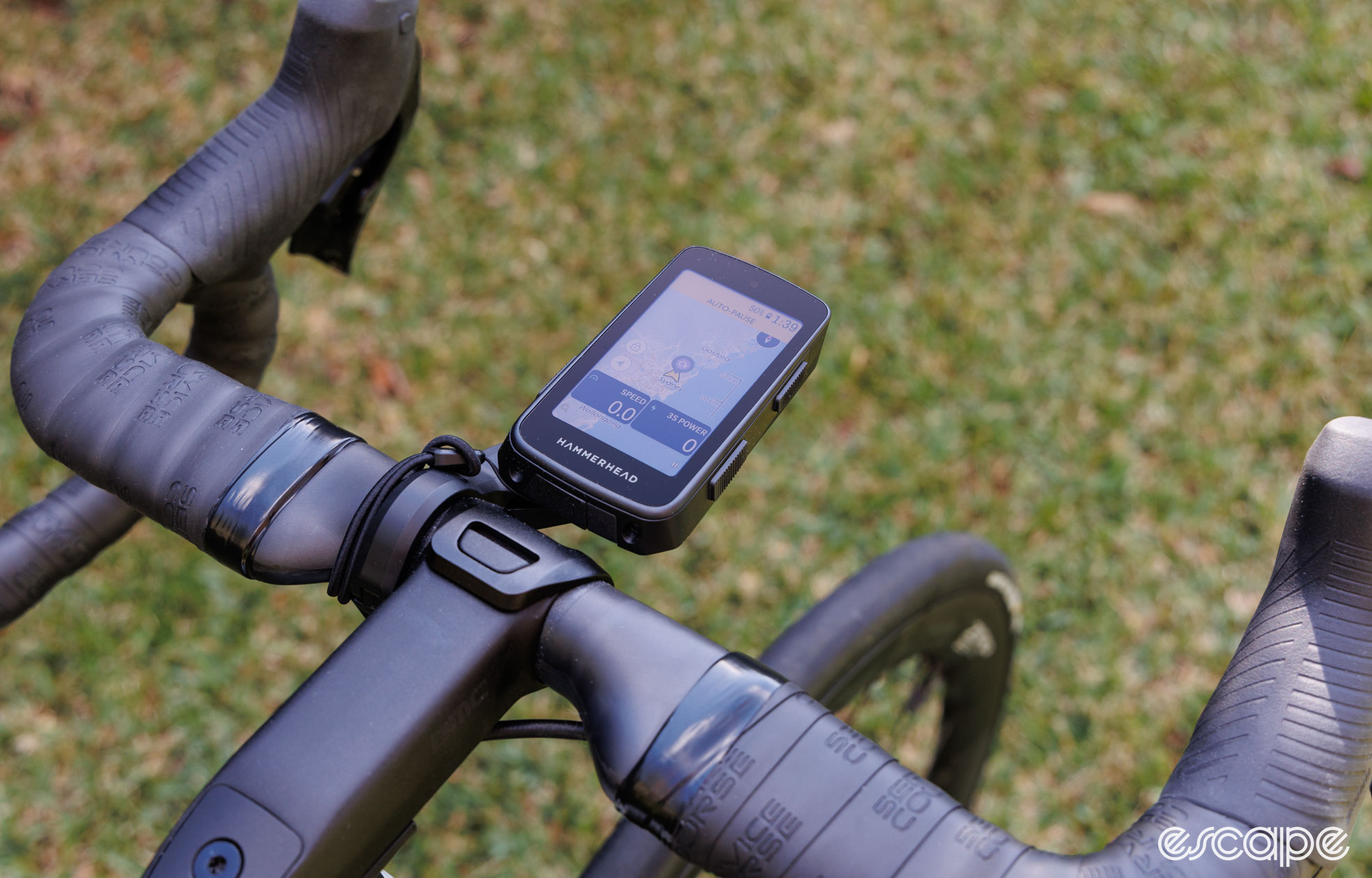It’s a big day for SRAM with the release of a new generation of its Red AXS groupset, and for that, we have a deep-dive review of what’s new, what’s old, where it’s great, and what’s not. In addition to a new flagship road groupset, the American company has also unveiled a new matching Zipp handlebar, new road tyres for its hookless wheels, and the next generation of the Hammerhead Karoo computer.
This article takes a (relatively) quick look at these items from SRAM’s sibling brands. And in case you prefer audio, there is a special episode of the Geek Warning podcast that covers what’s new and why (focused on the new Red AXS and the Hammerhead Karoo computer).
Covered in this article:
- Zipp SL80 Race handlebar
- Zipp Vector R Fitment Series tubeless tyres
- Hammerhead Karoo
Matchy-matchy with the Zipp SL80 Race handlebar
The new Red AXS levers introduce new ergonomics and a number of new features. While they can certainly be fitted to just about any road handlebar, Zipp has released a premium carbon bar to match. The new SL80 Race, as the name suggests, is built as a performance bar with some interesting ideas around integration.
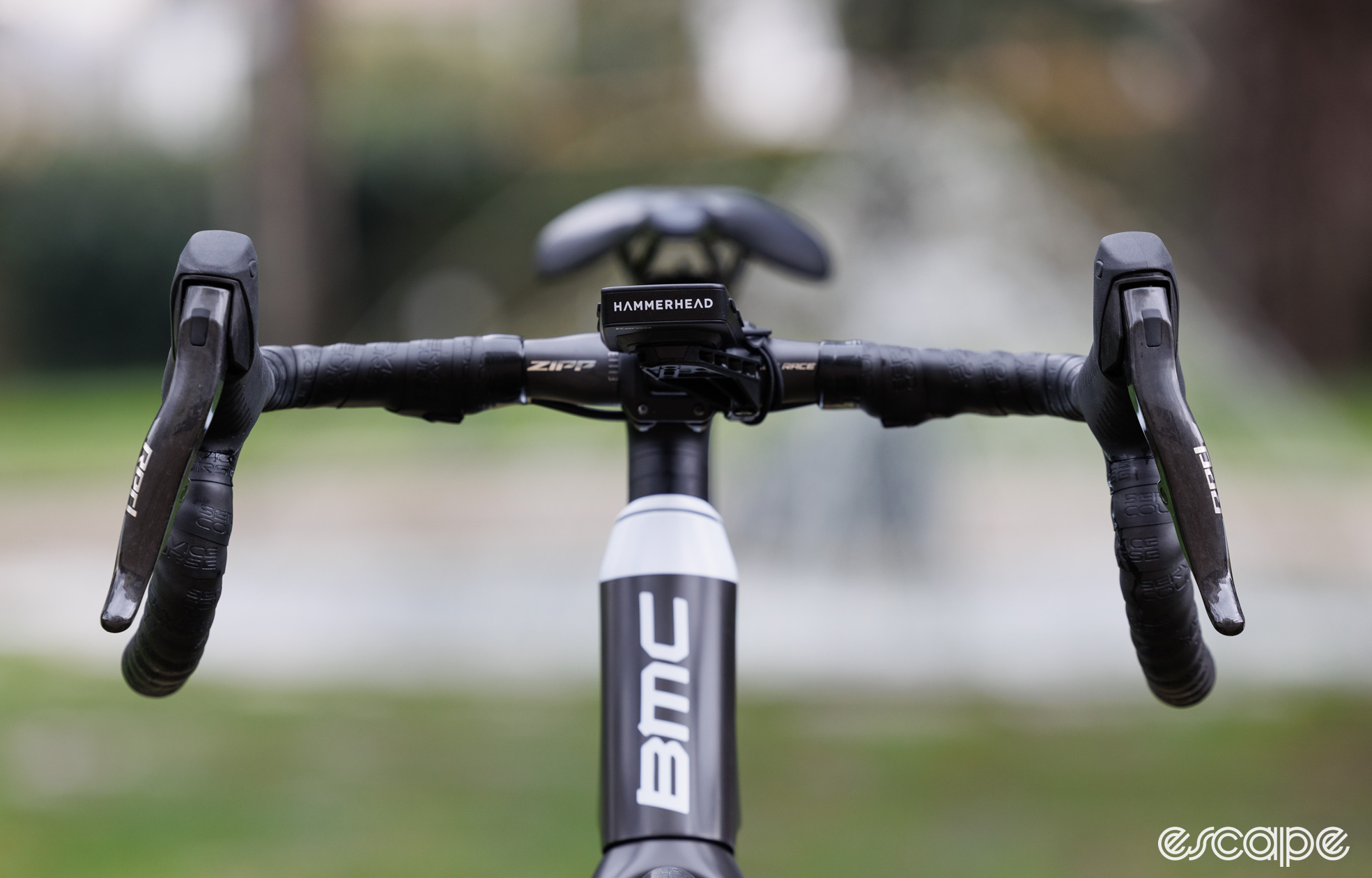

In many ways it’s a normal carbon aero handlebar. It has a regular 31.8 mm clamp with a flattened aero profile on the top that extends from behind the clamped area. It’s available in sizes from 36 cm through to 44 cm (measured centre-centre at the hoods), with all widths featuring a 80 mm reach, 125 mm drop, a 5-degree flare at the drops, and 8-degree outsweep.
The bar is not supremely light at 250 grams (42 cm, claimed), but Zipp backs it with a lifetime warranty. It retails for US$340 / €380 / £340.
A closer look starts to reveal some of the Red AXS integration. It has external channels for the brake hoses to be routed traditionally or into stems (similar to how Cervelo’s bar and stems do it). There are dedicated locator spots for SRAM’s wireless Blip shifters under the top and on the drops. The flare of the drop is matched to the flare of the new brake lever, while the radius of the drop is shaped to perfectly match the shape of the lever, too. And lastly, the top of the bar fills the gap once the shifter body has ended.


My testing of new Red AXS gave me an opportunity to test this bar, and there’s lots to like here. The drop shape is comfortable, the Blips integration is brilliant, the flare gives plenty of wrist clearance when sprinting, and I think the filled-gap behind the hoods has real merit in increasing comfort if you find yourself holding that far back.
That said, my preference is still for bars with a 70-75 mm reach figure, and the 80 mm figure of these felt particularly long once you add the marginal length increase in the shifter body, too. Still, it’s an intriguing bar for those seeking a more race-focused reach.
A collab between Zipp and Goodyear
Zipp has long had its name to a range of road tyres made to optimise its wheel offerings further. Now SRAM has partnered with Goodyear on a small range of all-rounder road tubeless tyres specifically intended to match Zipp’s 25 mm internal hookless rims (303 and 353 NSW, although it will also work with the 23 mm width 404/454 rims).

Goodyear calls it the Vector R Fitment Series, and the tyres are sized to measure exactly as quoted when fitted to Zipp’s intended wheels. Compared to Goodyear’s own offerings, these Zipp tyres have a different casing to optimise for aerodynamics and rolling resistance on the specified rims. The treads are seemingly shaped with the wider rim width in mind, and as you may expect, the tread pattern has some Zipp-esque details.
There are exactly three options to this limited tyre range, all intended with more everyday performance use in mind (think Continental's GP5000 TR) rather than being a race-day-only product. Intended for the Zipp 353 NSW wheels, the “Vector R NSW” is 30 mm wide. Meanwhile, the 303-wheel owners are recommended the “Vector R SW” tyre that has 30 and 35-mm width options. Each is priced at US$90 / €100 / £90. And that’s the range.
The Vector R NSW version is built on a 150 TPI (threads per inch) casing, has a breaker belt beneath the tread, and the same Graphene and Silica-infused tread compound as Goodyear’s latest racing tyres. A 30 mm width NSW tyre is quoted to weigh 280 grams (BYO sealant).
With a thicker tread cap and a 120 TPI casing, the Vector R SW will be the more durable and puncture-resistant of the two. The available 30 and 35-mm versions are quoted to weigh 325 and 365 grams, respectively.
So much press coverage has surrounded recent hookless tubeless wheel and tyre failures, so the new tyres do come at an interesting time. The 30 mm quoted size that measures exactly 30 mm on Zipp’s 353 NSW rim helps to address concerns over many riders still using 28 mm quoted tyre widths with the 25 mm internal width rims. Meanwhile Zipp’s own press release raises an eyebrow by stating “bead construction and geometry ensure safe retention on Zipp rims.”
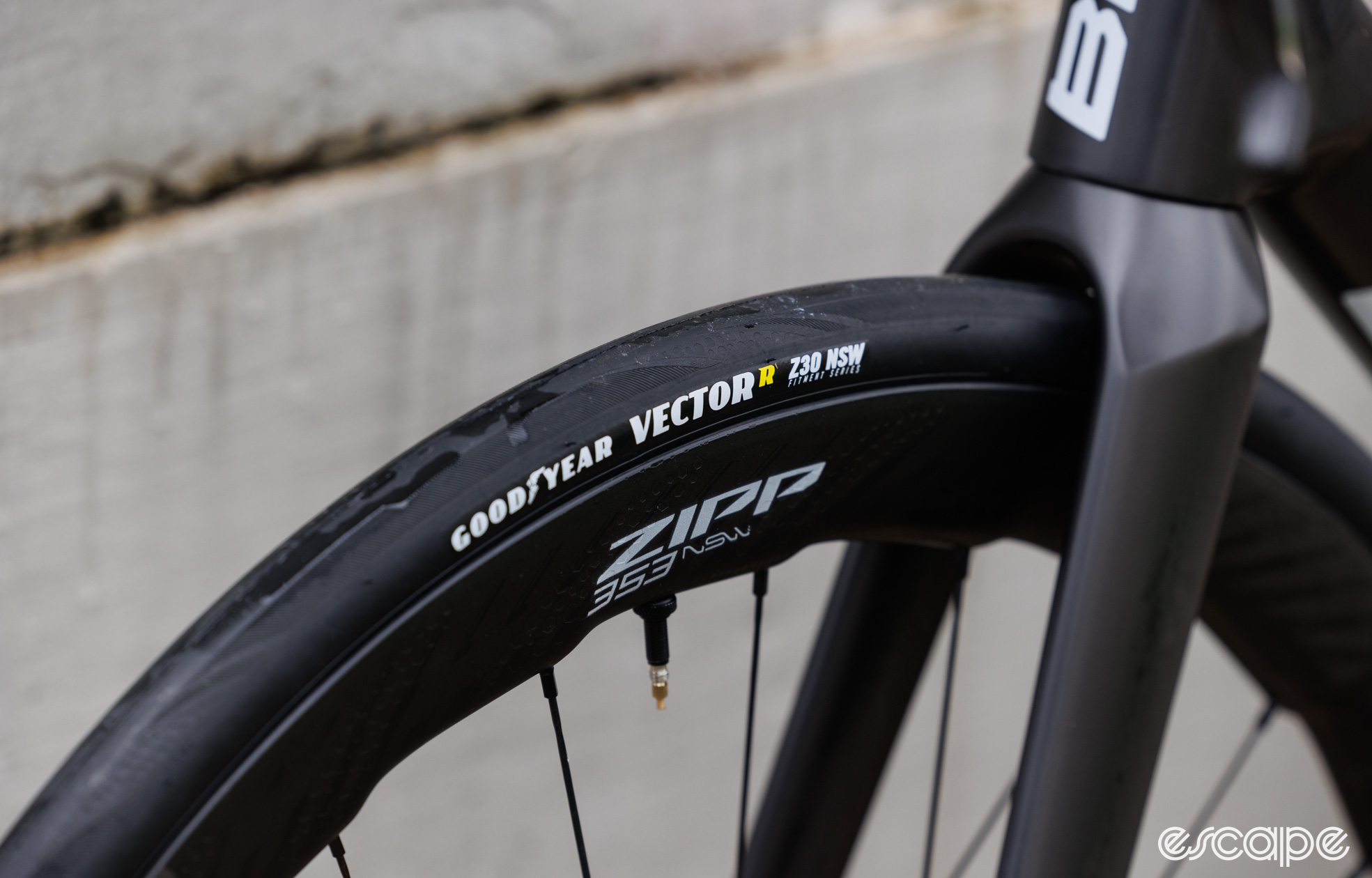
I’ve had the lighter NSW version of the tyres on and off a pair of Zipp 353 NSW wheels for over a month and have been comforted by the secure fitment that can still be fitted by hand and inflated with a regular pump (maximum 72.5 psi limit for the 30 mm size). That said, this positive experience isn’t notably different from what I've experienced using Goodyear’s other tubeless road tyres.
Related to such security on the rim, I witnessed a horrid strike with a pothole from hell during the launch of Red AXS, and not only did the tyre stay on (it did pinch flat), I lost €5 in betting that the rim would be cracked. Turns out the noise I heard was the bar slipping in the stem. It was a huge impact and was comforting to see everything hold together.
I haven’t done any controlled testing on these new tyres to make any useful judgements on rolling resistance. Similarly, I’m unable to confirm or dispute claims that these save 1W-3W in a wind tunnel when compared to an undisclosed competitor tyre (same Zipp 353 NSW rim).
What I can say is that I’ve found the tread to squeal lightly when cornering, which hasn’t inspired full confidence on damp roads. I initially thought this was just a new tyre doing new tyre things, but the noise is just as prominent a few hundred kilometres later. Equally, the tread cap on the NSW is intentionally thin for lower rolling resistance, and as somewhat expected for such a light tyre, I’ve experienced a few small cuts (there's a lot of broken glass on my local roads).
Overall, I’m happy to see more tyre options that promote great fitment and safety, but these tyres do raise questions about whether other tyres without such “bead construction and geometry” are as reliably safe for use on Zipp's hookless road rims. I suspect we’ll be discussing this topic for a long time to come.
Hammerhead Karoo
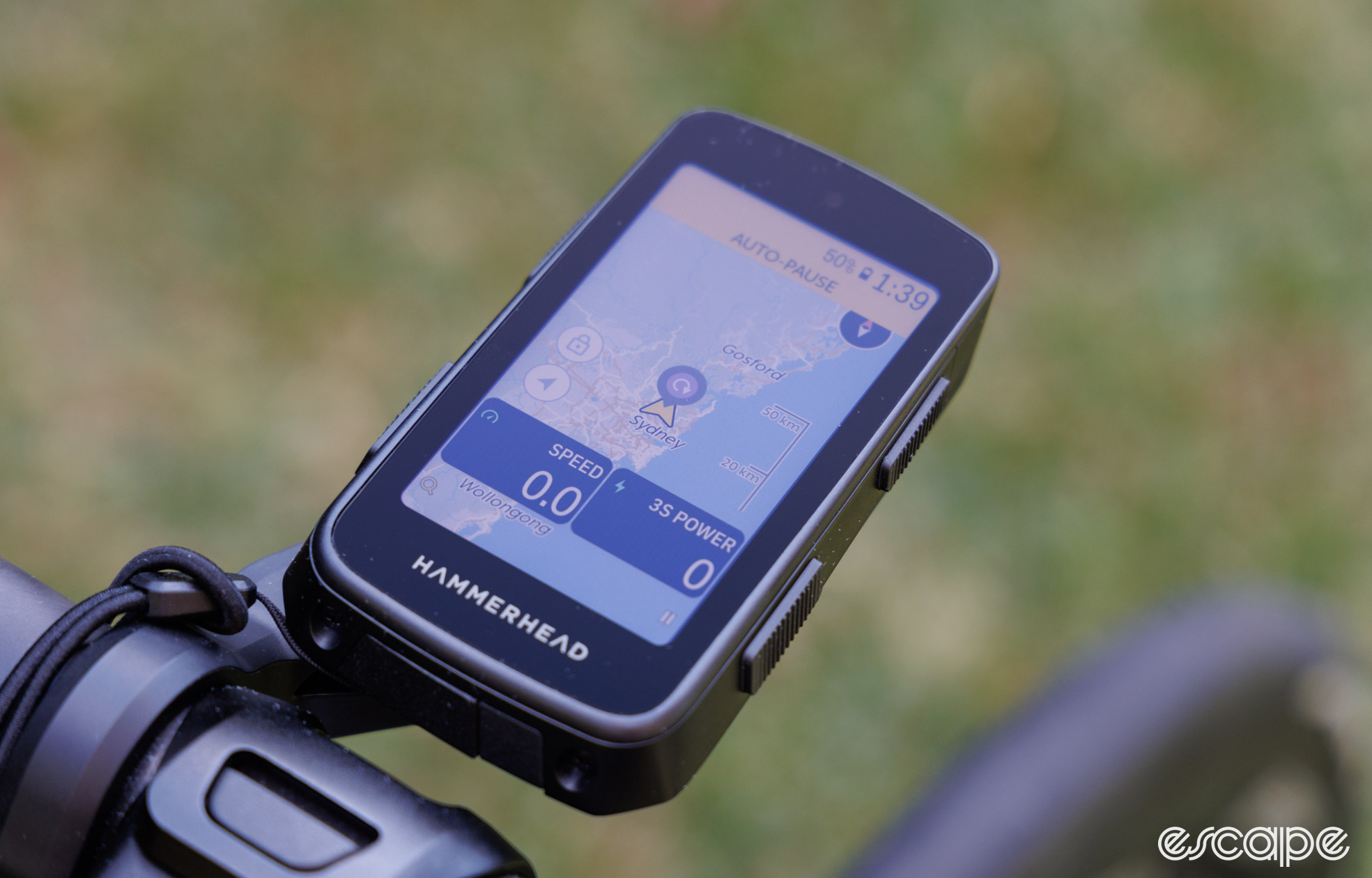
Replacing the Hammerhead Karoo 2 is – you guessed it – the Hammerhead Karoo. Wait, what? Yep, a naming convention that is sure to only get more confusing in years to come.
Starting life as a light-up dashboard that synced with your phone’s mapping to tell you when to turn, Hammerhead has since grown to become a cycling head unit company best known for its high-resolution smartphone-like screen. SRAM acquired the business in 2022 with what the company claims is a goal of “building the most integrated bike experience in the world.” The new Karoo is the first release under the new banner.
At a quick glance, it looks much like the Karoo 2 it replaces. However, there are a number of welcomed updates. The Android-based device doubles the processing power, doubles the internal storage capacity (now 64 GB), and features a much larger battery for a claimed 15-hour runtime (based on using the maps screen at 40% brightness, with a route loaded, five sensors connected, and Strava live segments telling you how average your performance is). And of course, it now charges efficiently via USB-C.
Previously the Karoo 2 relied on a Wifi connection or the optional use of a SIM-card (which less than 5% of owners used) to download maps and upload your ride data. In the new Karoo, gone is the optional SIM-card support and instead Hammerhead will bring itself into modern society with a phone companion app that offers data connection.
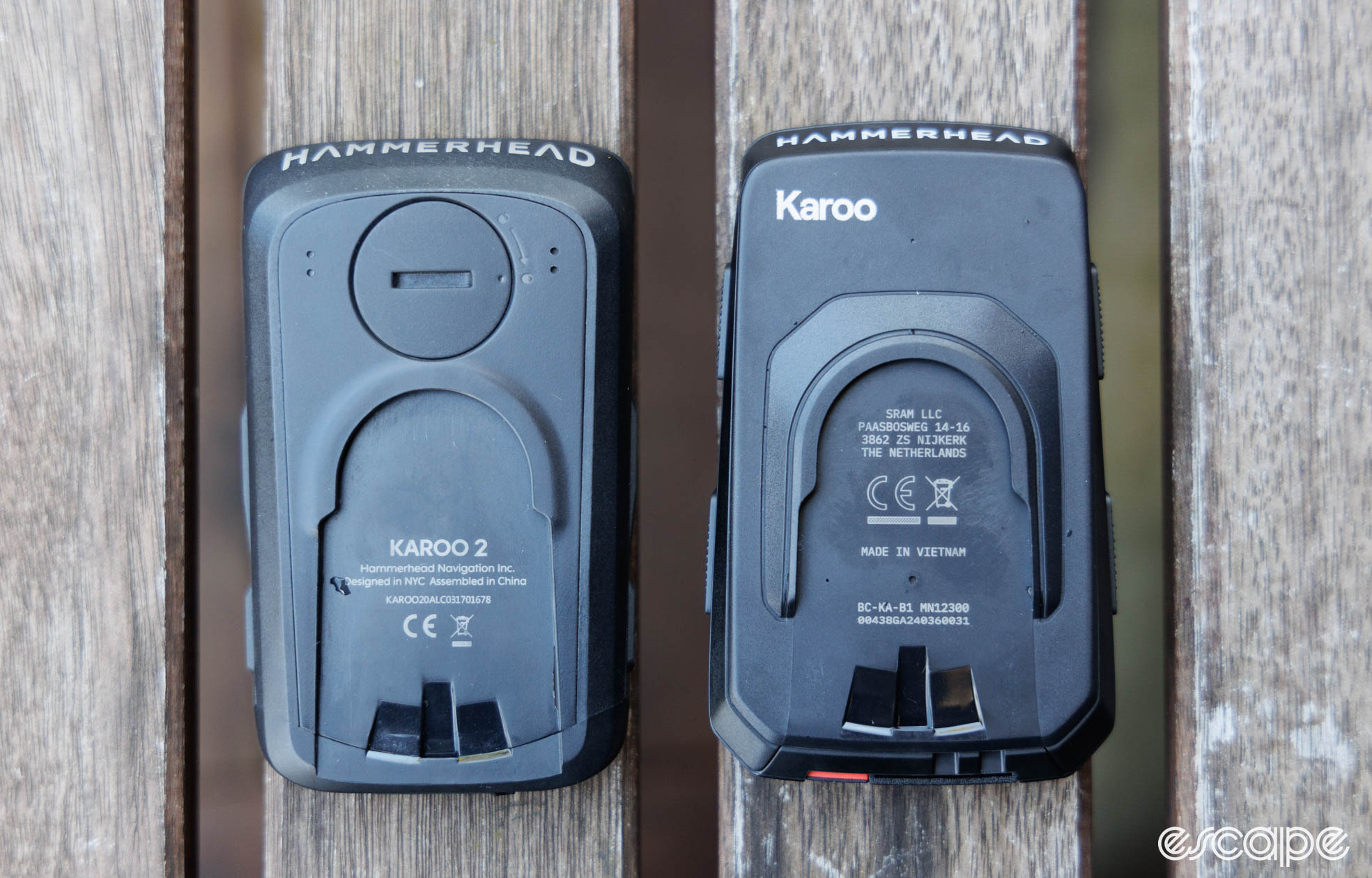
While no bigger than before, a new Corning Gorilla glass screen offers better clarity and less glare with a colourful resolution that Hammerhead has become known for. The Karoo is not a particularly small device, but this new version does offer a marginally slimmer profile and is now 116 grams, shaving 16 grams off the previous version.
The device keeps with its high-quality touchscreen, but improvements have been made to surrounding buttons which are now larger, further spaced apart, and with better haptic response. Meanwhile, there’s now a stealthy off-on button at the base of the unit – so stealthy I didn’t even find it immediately.
Hammerhead is sticking with its own “HMS” mounting interface that allows the computer to slide in from the front (intended to remove clearance issues sometimes experienced with quarter-turn mounts). In addition to the likes of K-Edge now supporting the system, Hammerhead has updated its supplied mount to now be sturdier, offer accessory mounting beneath, provide a small amount of fore-aft adjustment, and my favourite, a captured bolt that doesn’t drop to the floor when you undo it. As before, the device also includes a HMS to Garmin-style quarter-turn mount adapter in case you can’t use the provided out-in-front mount.
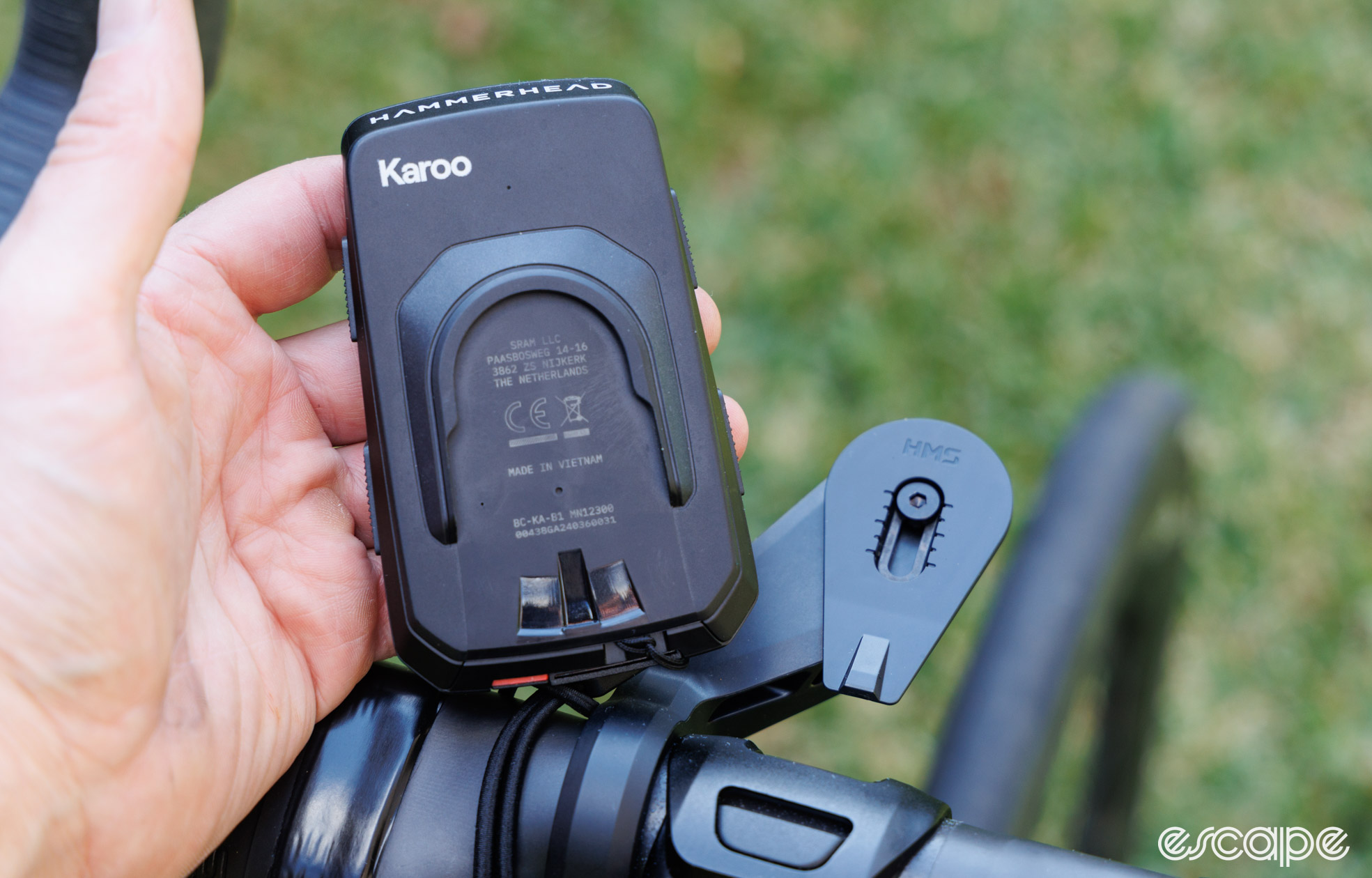
In terms of features and price (US$475 / €500 / £450 / AU$750, or US$3,000 with a free Red AXS groupset), the new Karoo is positioned against a device like the Garmin 840 rather than the kitchen-sink-like Garmin 1040. Some highlights include the ability to set a desired destination through Google or Apple maps and simply send it to the device. There’s now impressive integration with TrainingPeaks and TrainerRoad. And there’s the ability to sideload apps like Zwift, Netflix, or Worms W.M.D onto the Android-based device. Such app examples are not recommended, nor sensible, but are possible to do without voiding the warranty, and the same goes for uploading Ki2 in order to win back the missing connectivity between Shimano Di2 and the Karoo).
So where does the “most integrated bike experience in the world” come into it? Currently, that’s most obvious with an integration that sees any bikes/profiles/sensors set in SRAM’s AXS app automatically sync to the device. This actually caught me off guard during my testing of the Yeti ASR and RockShox’s Flight Attendant where the Karoo was telling me my power figures and gear selection despite me having done no such setup on the device.
The new Karoo can also be synced with SRAM’s Blip buttons or the new RED AXS Bonus Buttons for a hands-free user experience. Here you can set the buttons to allow page swiping, basic feature control, map zooming, and more. It’s quite a nice feature once you get the hang of it, although admittedly I did prefer to keep the extra buttons for the purpose of shifting gears.
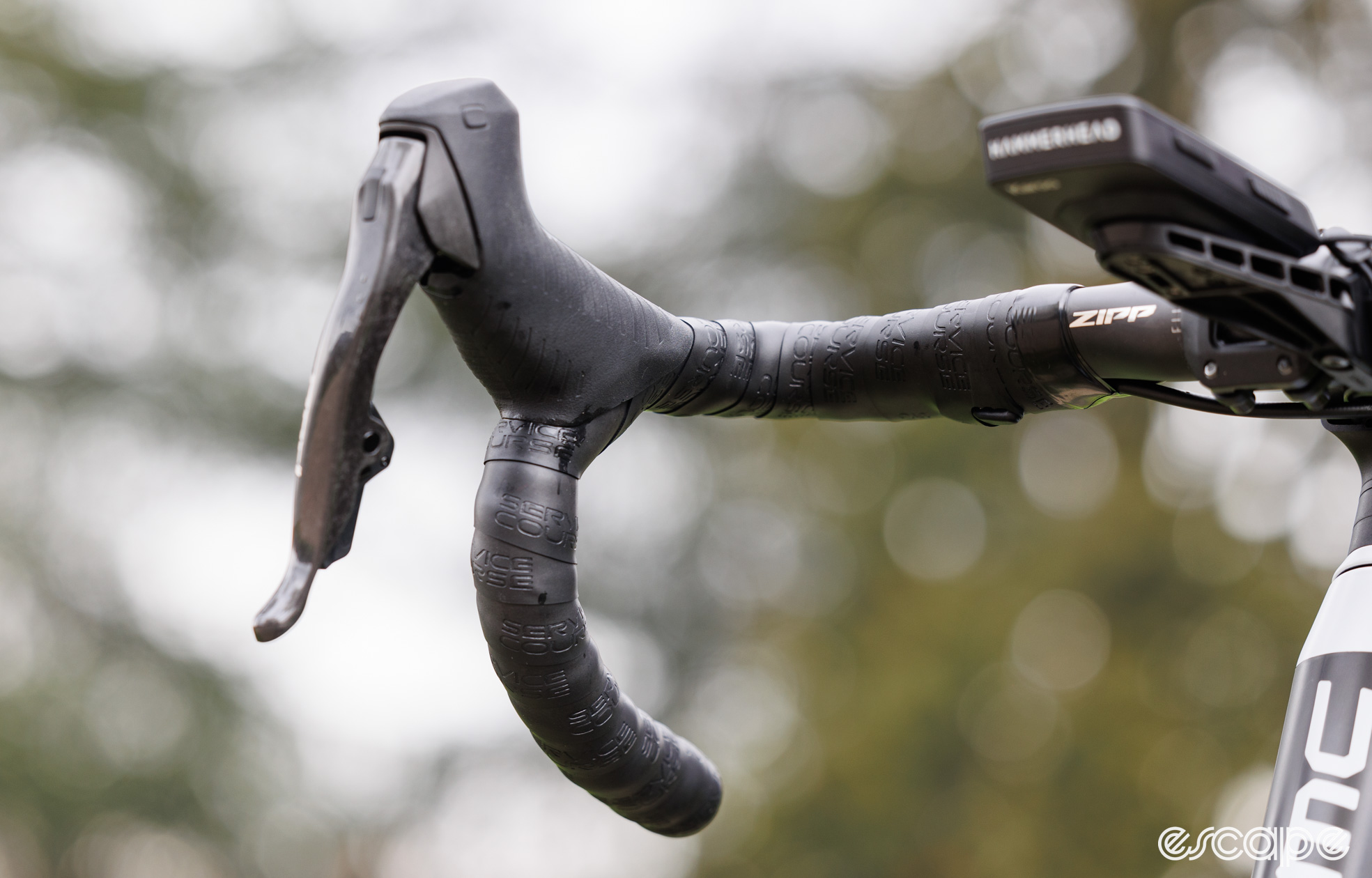

All of this is cool and rather well-executed, but it feels like we’re only seeing a glimpse of what SRAM has in store for the integration. If my wife didn’t already spend all of our money on $2 scratchy tickets, I’d bet that this computer could lead to SRAM offering some form of automated shifting based on measured power, the route ahead, and how good it thinks you are. Equally, Ray of DCRainMaker and I giggled that there’s potential for the unit to get sassy when you’re riding cross-chained or trying to front shift under too much load. And if I were to be a sceptical a*shole for a second, there’s probably also a data play at hand here, too.
Beyond that, SRAM has partnered with a few brands to offer Red AXS-equipped bikes with a Karoo fitted as stock. I believe it may be the first time we’ve seen a premium head unit supplied with a stock bike, and it’ll be interesting to see how it's received in the market. From a business standpoint, it makes sense that SRAM would want a customer who can afford a Red AXS bike to at least try its computer offering.
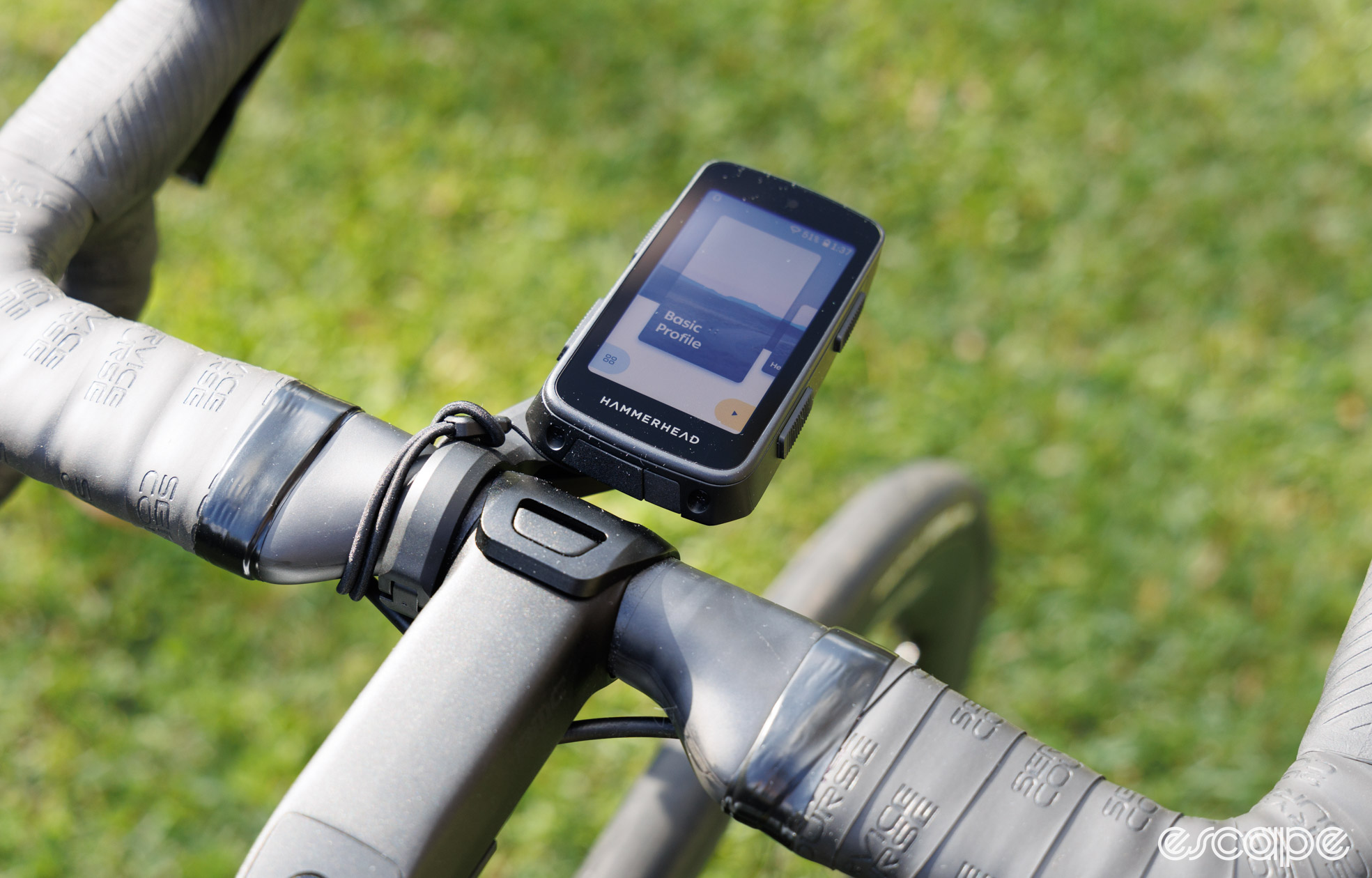
I’ll be the first to raise my hand and say I only like to write and review products in categories I can offer expertise within. Frankly, I’m out of touch on the topic of GPS units, and so I’ll keep the detailed praises and criticisms to the true expertise of DC RainMaker and GPLama.
I will quickly say that this is one computer you’ll want to use the supplied lanyard, as while the mount design is pretty good, its hold isn’t knock-resistant. Also, I’m left wishing that the new mount somehow integrated a small amount of angular adjustment to keep the computer perfectly square to the handlebar/stem (which you may be able to spot in my photos, isn't quite perfect), it's a wish I have for other makers of computers and mounts, too.
The Hammerhead Karoo's appeal likely falls on road cyclists who don’t want endless battery life but rather seek quality mapping, better outdoor training integration, and/or the ultimate user experience with SRAM’s AXS components. Meanwhile, my personal preferences will likely see me still reaching for smaller, lighter, and no-doubt dumber head units on my usual rides where I just want power numbers, distance, and the time (and now you understand why I don’t review head units).
If you haven’t already, you can read all about the new Red AXS groupset in my detailed review. I also interviewed key figures from the SRAM Road and Hammerhead product/engineering teams if you want to hear directly from those who created these products.
Did we do a good job with this story?

